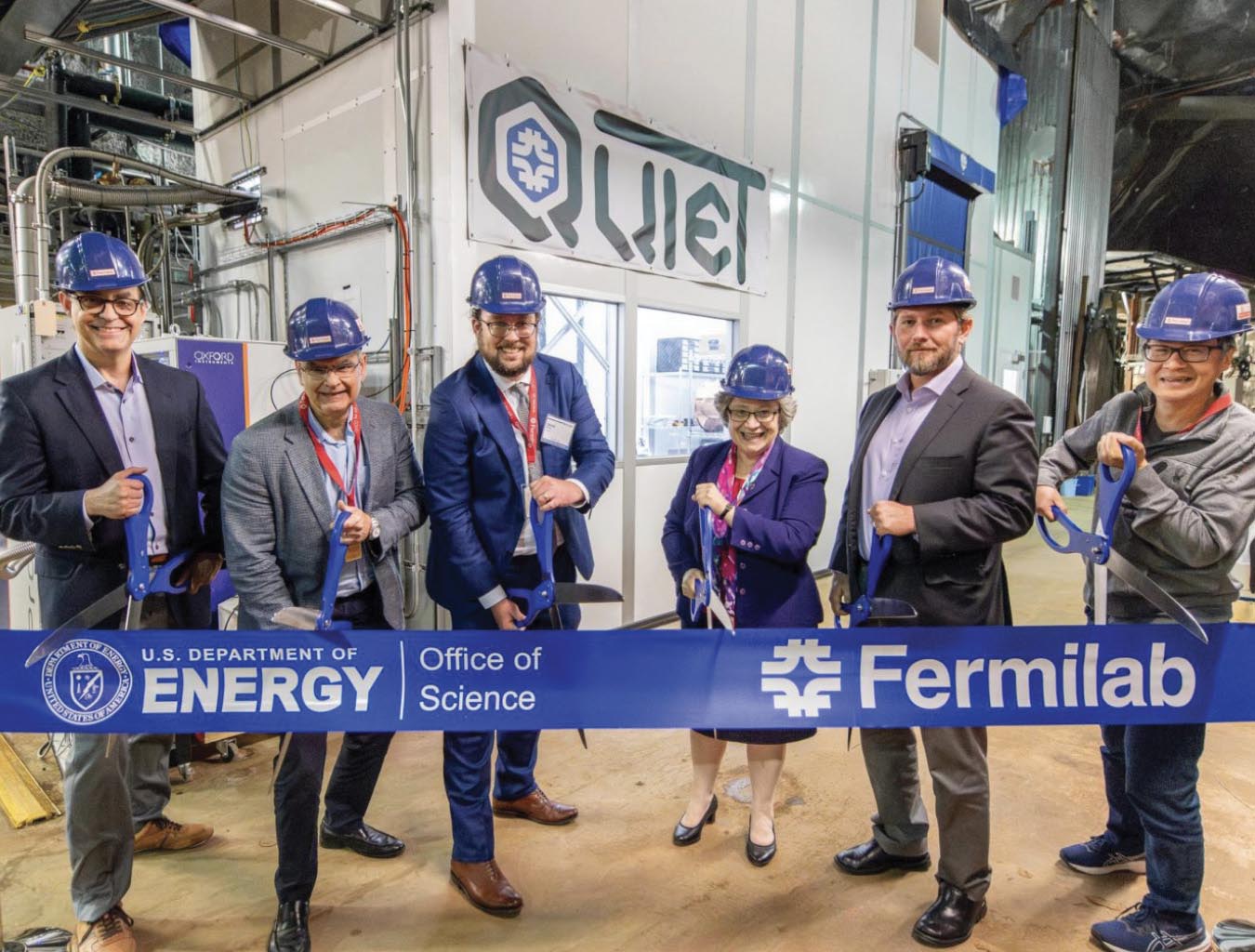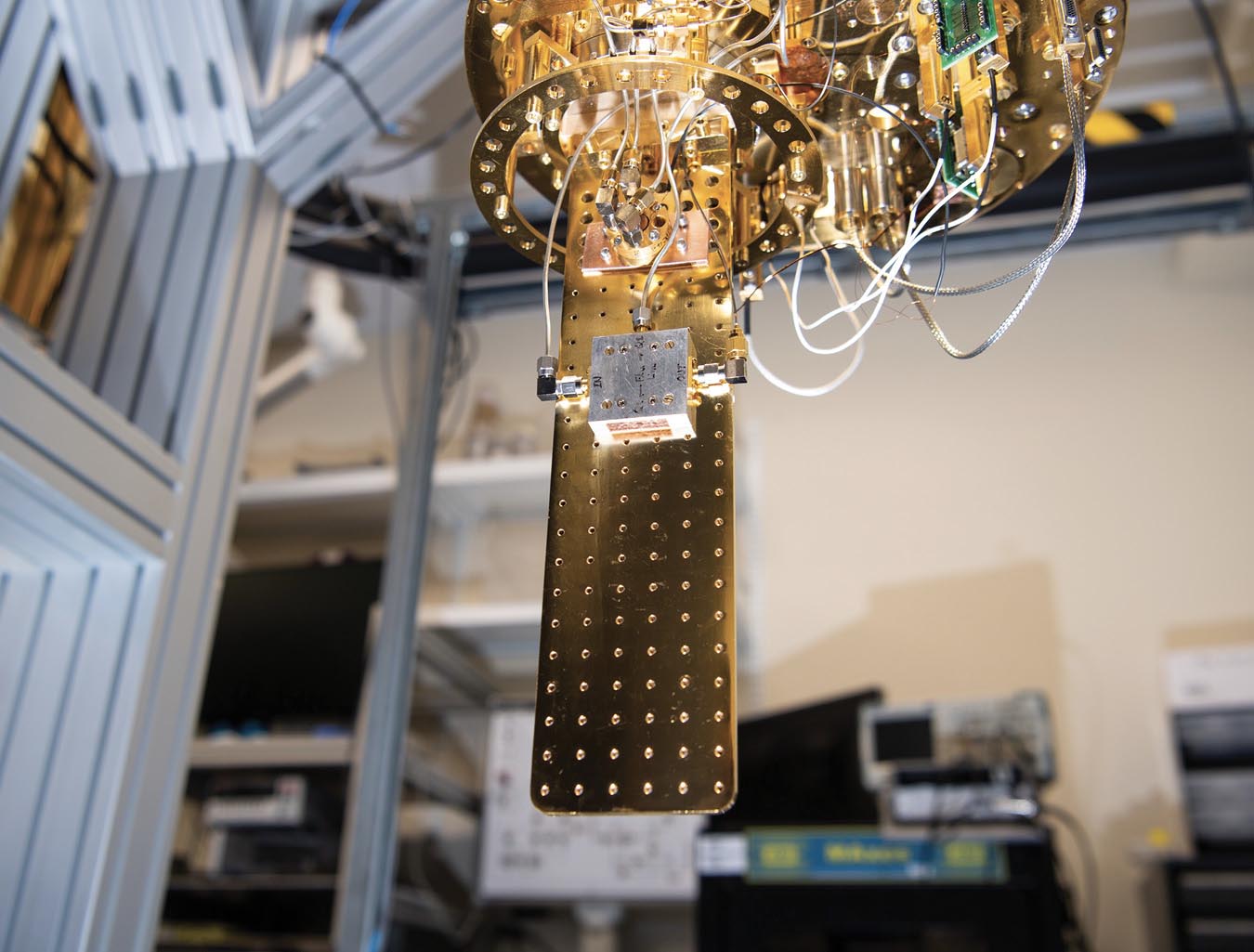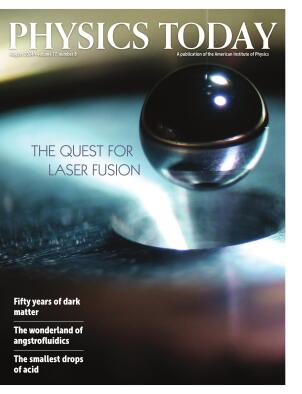Fermilab goes deep to silence noisy radiation affecting qubits
DOI: 10.1063/pt.cytj.dpzh
Twin detectors at Fermilab are scheduled to start probing superconducting qubits this month as part of a growing effort to pinpoint how cosmic radiation affects the fragile components. The insights will help scientists build more robust quantum computers. The Fermilab duo consists of a new detector 100 meters underground dubbed QUIET, for the Quantum Underground Instrumentation Experimental Testbed, and one on the surface called LOUD, which began operations in 2022. Differences between the two detectors’ observations will allow researchers to assess how cosmic radiation affects qubit performance.
Quantum researchers realized about four years ago that cosmic radiation limits the lifetime of superconducting qubits, says LOUD project lead Rakshya Khatiwada. When cosmic radiation interacts with a qubit, it causes decoherence, a process in which the delicate quantum state collapses and the qubit loses its stored information (see “Ionizing radiation may hinder popular qubit technology
QUIET and LOUD use superconducting qubits built with circuit loops that carry Cooper pairs—indirectly bound electrons that act as individual particles. Google, IBM, Microsoft, and other companies have chosen to build their quantum computers with superconducting qubits, and each one will need hundreds to thousands of them. Scaling up systems requires figuring out radiation’s role in qubit errors, says Fermilab scientist and QUIET project lead Daniel Baxter.

The Quantum Underground Instrumentation Experimental Testbed officially opened on 30 May at Fermilab. Among the attendees at the ribbon-cutting ceremony were Dan Baxter, the lead on the experiment (third from left); Fermilab Director Lia Merminga (fourth from left); and Travis Humble (fifth from left), director of the Quantum Science Center at Oak Ridge National Laboratory, which funded QUIET.
DAN SVOBODA/FERMILAB

Scientists set and check a qubit’s state using an RF signal. At LOUD, they measure high-energy particle interactions and differentiate between radiation sources by assessing how much energy dissipates across the qubits. Muons deposit several gigaelectron volts deep in a substrate and can cause multiple qubits to malfunction, whereas beta particles deposit only a few megaelectron volts on the surface and cause localized errors. Approaches to improving qubit performance may differ depending on the culprit.
That’s where QUIET comes in. Scientists will first test qubits at LOUD. They will then transfer the samples to QUIET to replicate the experiment in an environment with a 99.5% reduction in muon flux. That will allow scientists to look for energy deposits from gamma rays and other products of naturally occurring radioactive isotopes, which can disrupt qubit performance, says Laura Cardani, a researcher at Italy’s National Institute for Nuclear Physics who studies supercomputing qubits at the underground Gran Sasso National Laboratory. She says that even the printed circuit board, a component of a superconducting qubit, can produce a trace amount of radiation.
A group effort
In May Fermilab hosted a workshop about the impacts of radiation on superconducting qubits. “It was one of the first large gatherings of people from both the quantum computing and high-energy physics communities,” says Baxter. The workshop celebrated QUIET’s debut and provided a space for experts across fields to discuss shared challenges in combating radiation effects in their research.

A superconducting qubit (inside the gray box on the copper pegboard) is prepped to undergo testing at Pacific Northwest National Laboratory.
ANDREA STARR/PACIFIC NORTHWEST NATIONAL LABORATORY

Under the 2018 National Quantum Initiative, the Department of Energy and other agencies were called on to create and fund at least two quantum research centers each. DOE invests a total of $125 million per year in five centers. One of them, the Quantum Science Center, based at Oak Ridge National Laboratory, funds QUIET. The center’s director, Travis Humble, says the experiment costs on the order of $1 million, with the dilution refrigerator alone clocking in at about $500 000.
QUIET also may aid in the search for dark matter. Traditional dark-matter detection techniques are mostly limited to electron volt and higher energies, but qubit sensors could detect lower-energy dark-matter candidates. “It turns out that bad quantum computers make good quantum sensors,” says Humble.
In addition to QUIET, the Northwestern Experimental Underground Site, located in the same cavern, is used for related work. Pacific Northwest National Laboratory in Washington State, the Sudbury Neutrino Observatory in Canada, Gran Sasso in Italy, and the Stawell Underground Physics Laboratory in Australia are also taking advantage of overburden shielding to investigate the effects of cosmic radiation on superconducting qubits.
At QUIET, says Baxter, electronics have been tested over the past few months to “get the noise and attenuation just right.” The detector should be ready for data collection by the end of the month.

